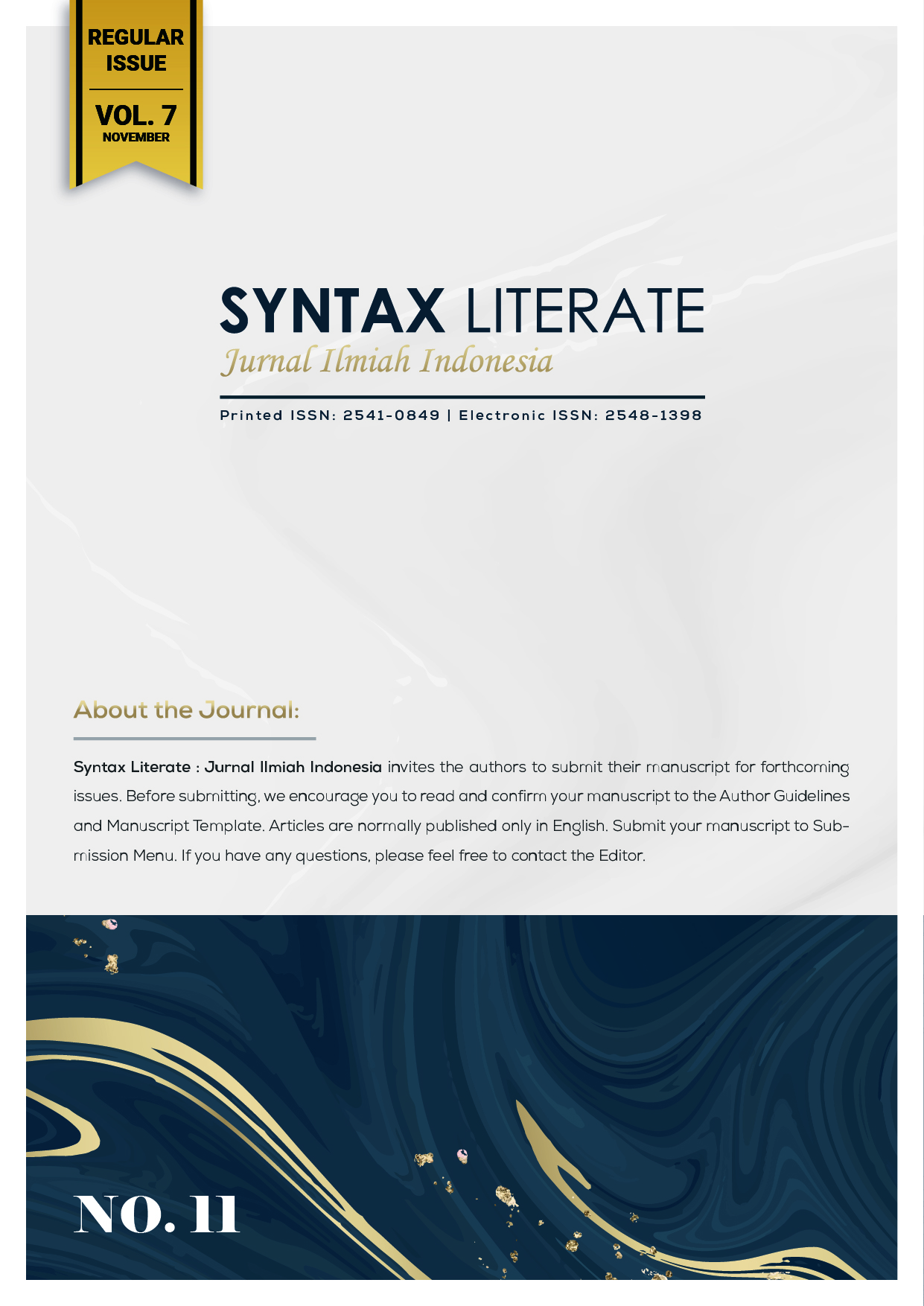The Complexity of Washback Effect on Students’ Learning in Toefl Preparation Course
Abstract
English language tests in Indonesia have been long established to measure English language proficiency, especially in higher education. Unlike the huge demand for English competency and the high number of language test takers, research on the washback effect or the effect of tests on language teaching and learning is still limited. This research aims to explore the washback effect found in student learning. This research uses a qualitative research design involving seven final year students from one university in Pontianak as participants. Researcher collected data through classroom observation and interview. This research focused on one type of English test, namely the TOEFL (Test Of English as a Foreign Language). The data collected was used to answer the nature of the TOEFL preparation course and a real picture of all the activities that occured during the learning process. The findings showed that there was a significant effect of the TOEFL and TOEFL preparation course on student learning experience specifically on the depth of learning. Despite the finding that TOEFL preparation course brought positive washback effect on students’ learning, this research suggests higher education institution and teachers to keep providing better teaching and learning experience in test-oriented English class.
Downloads
References
Bailey, K. M., & Nunan, D. (2005). Practical English language teaching: speaking.
Chaipuapae, P. (2019). Workplace listening comprehension of Thai undergraduates in an Asian English as a Lingua Franca context. Northern Arizona University.
Crisp, D., Atlas, R. M., Breon, F.-M., Brown, L. R., Burrows, J. P., Ciais, P., Connor, B. J., Doney, S. C., Fung, I. Y., & Jacob, D. J. (2004). The orbiting carbon observatory (OCO) mission. Advances in Space Research, 34(4), 700–709.
Docktor, J. L., & Mestre, J. P. (2014). Synthesis of discipline-based education research in physics. Physical Review Special Topics-Physics Education Research, 10(2), 20119.
Green, A. (2006). Models of lifelong learning and the ‘knowledge society.’ Compare, 36(3), 307–325.
Holt, D. H. (1993). Management: concept and practices. New Jersey: Prentice Hall, Englewood Cliffs. Ivancevich, John M. William F. Glueck.(1989). Foundations of Personnel/Human Management, 21, 397409.
Hughes, S. A. (1993). Physical models and laboratory techniques in coastal engineering (Vol. 7). World Scientific.
McNamara, T. (2000). Language testing. Oxford University Press.
Menken, K., Kleyn, T., & Chae, N. (2012). Spotlight on “long-term English language learnersâ€: Characteristics and prior schooling experiences of an invisible population. International Multilingual Research Journal, 6(2), 121–142.
Moher, D., Hopewell, S., Schulz, K. F., Montori, V., Gøtzsche, P. C., Devereaux, P. J., Elbourne, D., Egger, M., & Altman, D. G. (2012). CONSORT 2010 explanation and elaboration: updated guidelines for reporting parallel group randomised trials. International Journal of Surgery, 10(1), 28–55.
Morrow, S. (1986). “ No Girl Leaves the School Unmarriedâ€: Mabel Shaw and the Education of Girls at Mbereshi, Northern Rhodesia, 1915-1940. The International Journal of African Historical Studies, 19(4), 601–635.
Sadeghpour, M., & Sharifian, F. (2019). World Englishes in English language teaching. World Englishes, 38(1–2), 245–258.
Septiyanti, M., Liana, L., Sutriningsih, Kumayanjati, B., & Meliana, Y. (2019). Formulation and evaluation of serum from red, brown and green algae extract for anti-aging base material. AIP Conference Proceedings, 2175(1), 20078.
Shih, T., & Lindley, C. (2006). Bevacizumab: an angiogenesis inhibitor for the treatment of solid malignancies. Clinical Therapeutics, 28(11), 1779–1802.
Spratt, M. (2005). Washback and the classroom: The implications for teaching and learning of studies of washback from exams. Language Teaching Research, 9(1), 5–29.
Stromquist, N. P., & Monkman, K. (2014). Defining globalization and assessing its implications for knowledge and education, revisited. Globalization and Education: Integration and Contestation across Cultures, 1, 1–21.
Tsangari, H., Paschalidou, A. K., Kassomenos, A. P., Vardoulakis, S., Heaviside, C., Georgiou, K. E., & Yamasaki, E. N. (2016). Extreme weather and air pollution effects on cardiovascular and respiratory hospital admissions in Cyprus. Science of the Total Environment, 542, 247–253.
Wall, D., & Alderson, J. C. (1993). Examining washback: the Sri Lankan impact study. Language Testing, 10(1), 41–69.
Watanabe, Y., Bednorz, Jg., Bietsch, A., Gerber, C., Widmer, D., Beck, A., & Wind, S. J. (2001). Current-driven insulator–conductor transition and nonvolatile memory in chromium-doped SrTiO 3 single crystals. Applied Physics Letters, 78(23), 3738–3740.
Copyright (c) 2022 Muhammad Taufik Hidayat

This work is licensed under a Creative Commons Attribution-ShareAlike 4.0 International License.











